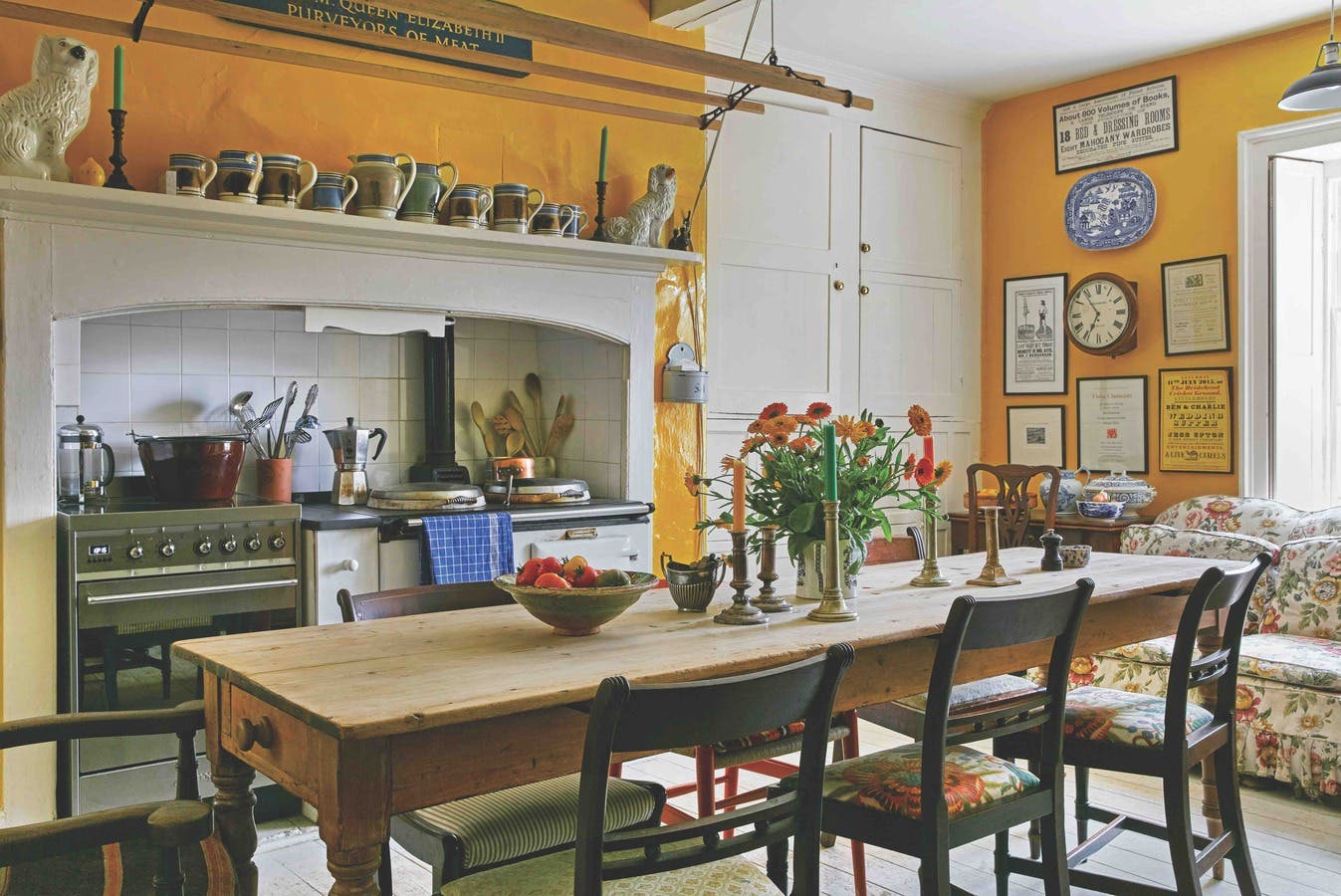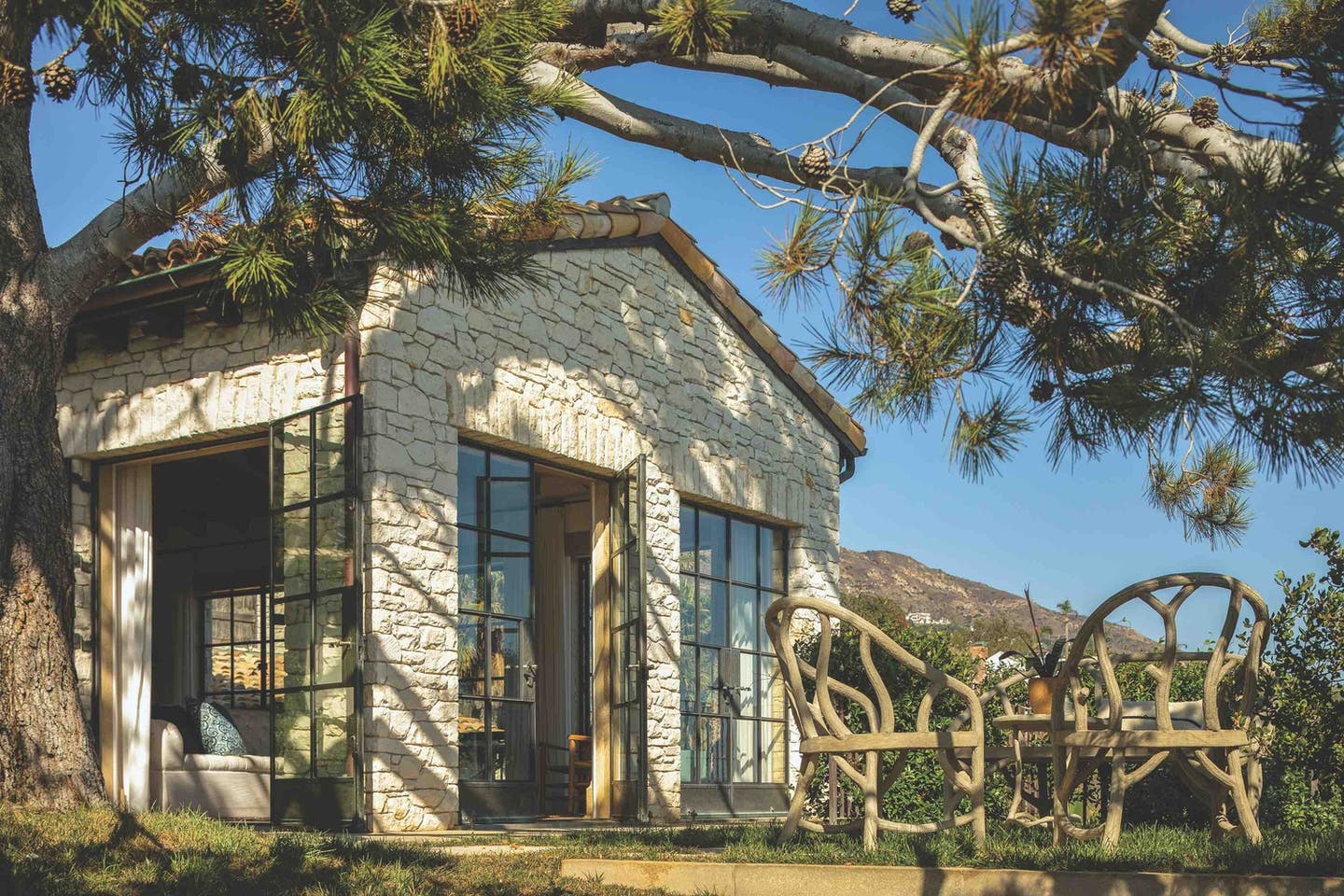
Restoration & Renovation
The Decatur House
Project Decatur House
Architect Franck & Lohsen Architects
When Stewart McLaurin, president of the White House Historical Association (WHHA), called Susan Watkins of Franck & Lohsen Architects to ask if she would help the effort to restore the first floor of the Decatur House in Washington, D.C., she responded with a resounding, “Of course!” As the daughter of a U.S. Navy admiral who raised his family within the walls of multiple important historic homes, Watkins was keen on the commission. Built between 1818 and 1819 by Neoclassical architect Benjamin Henry Latrobe for Commodore Stephen Decatur and his wife, Susan Wheeler, the house, which sits at the northwest corner of Lafayette Square just blocks from the White House, is Federal in style and as familiar to Watkins as a beloved old coat. “When Stewart gave me this mission, he said, ‘I need the Decatur House to be the prestigious home it once was. It’s not a museum anymore,’” she recalls. “I knew what to do. I know what is right in a home like this.”
Watkins was well versed in the house’s history, which includes its purchase by General Edward Fitzgerald Beale in 1871. Under his hand, significant changes were made to both the interior and exterior. Sandstone lintels were added to the front door, and new first-floor windows gave the façade a Victorian flair, as did decorative embellishments inside. In 1944, during a restoration spearheaded by Thomas Waterman, who was hired by Mrs. Beale, the house was simultaneously restored to its original state and made uniquely its own with a series of changes that included cutting the first-floor windows down by 15 inches. Suffice it to say, by the time the National Trust for Historic Preservation acquired the property in 1956, it was a storied structure—one whose saga was not yet over.
According to Michael Franck, principal of Franck & Lohsen Architects, “Prior to Stewart McLaurin coming to the Association in 2014, the Decatur House had been practically denuded of all historic artifacts and furnishings. It had become a banal box—all of the nice things were removed, and it didn’t have any historic character left.” McLaurin concurs, saying, “These rooms were a blank canvas. The White House Historical Association board of directors was enthusiastic to create a space that would bring to life the history of the home and become a functional area in support of our mission.” McLaurin was relying on Watkins to bring back the home’s character. The scope of her work included the front foyer, two parlors, the back entry, the stairwell, and the second-floor landing. She was given nine weeks to complete the restoration.
The project’s purview was primarily cosmetic, as the structure itself was deemed sound, though beneath the Wilton rug in the entry hall, they found floor boards in need of repair. That work was done using boards from the attic floor. Watkins explains: “We made the decision that the original 1820s flooring would not be able to withstand human traffic, and the National Trust for Historic Preservation gave us permission to cover it with a soft cork to keep it preserved. Floor boards from the 1870s—when the Beales redid the floors—were found in the attic; they were in extremely poor condition but they were numbered. Each piece was completely restored using preservation-quality products and processes such as hot wax filler and very gentle brushes. Most of this work was done by hand. There were three types of wood used in the herringbone-pattern drawings that I found, which were used to re-create the floor with all of the boards in their original location.”
They also fixed cracks in the plaster walls and reworked the HVAC system, which was hidden within the fireplaces. Additionally, they changed the face of the chimneys and the white marble hearth stone and quarter-inch surround, which was not original. “Nothing about the fireplaces was precious except for the mantels,” Watkins says, adding that they painted the fireplaces black to enhance the mantel work. Notably, a chair rail was almost added. “We wanted to save the plaster walls from being pounded by art exhibits being hung,” Watkins explains. “There was no molding to reference outside of one period, so we designed a profile that the National Trust approved, but it just didn’t work visually.”
The pith of Watkins’s work was to create period ambience. “My goal was to make it the Decaturs’ home,” she explains. To do so, she searched the furnishings that had been locked away in storage and the artifacts held in the Decatur House vault. “I was looking for items that had belonged to Stephen and Susan Decatur but there was so little left because she had to leave the house and sell her belongings after he was killed in a gentlemen’s duel. Most things went to auction. I took everything that would visually work, as well as what was theirs, including his prize awards for his bravery in battle—those needed to be on display. The intent was to re-create a semblance of what their home might have looked like—and the essence of who they were in their home.” The collection held a lot of broken furniture as well as many pieces from the Truman era, which wouldn’t have been period-appropriate. Thus, it was necessary to have reproductions made. The entire dining room set, for example, was designed and built by a New Hampshire-based artisan whose talent is perhaps most evident in the cabinet housing White House china.
Watkins estimates that roughly 90 percent of the antique furnishings and artifacts she selected are strictly ornamental. She did, however, still need to plan for how the house would function. “Stewart sees the Decatur House, not as a space to rent to organizations but as the parlors of the White House Historical Association,” Franck says. With that in mind, Watkins ensured that the replica pieces as well as the refurbished and reupholstered furnishings were structurally stable to accommodate visitors. Likewise, the furnishings selected from the Beale family collection were rebuilt and reupholstered by a workshop in Maryland. The house is a mix of artifacts and history as well as furniture and surfaces that need to hold up to contemporary usage,” she notes. “That was a very strong consideration in terms of what to select from the old family collection.”
Notable objects from the house vault include the eagle mirror, the Decatur sword, battle memorabilia, and Stephen Decatur’s desk from the USS United States. “The restoration allows us to showcase items from the Decatur collection as well as the Beale family going back to 1819,” says McLaurin. “We intentionally did not choose to interpret a specific period of time, but rather blended characteristics of periods so these two families of distinction could be highlighted in a meaningful way.”
Watkins worked with historic lighting specialist Paul Bavis from Spurgeon-Lewis Antiques to source appropriate fixtures, and Scalamandré fabrics were imported from France for the new upholstery. The company was chosen as a nod to Jacqueline Kennedy’s relationship with that family. The selected patterns, materials—cotton, linen, silk, and viscose—and colors were based on those that would have been available in the 1820s. Thought was also given to Mrs. Decatur’s French tastes.
Watkins notes the arrangement of the furnishings and decorative elements saying, “The simple placement of his desk, of the sofas, of the chairs—the parlors don’t tell you anything else but to do that.” Of the parlor rooms, McLaurin says: “They are intended to be a complement to the President’s guest house, Blair House, situated on the southern corner of the same block where Decatur House is located. Both entities are important assets for supporting and telling the stories of White House present and White House past.”
In recognition of their work on the Decatur House, Franck & Lohsen Architects received the 2019 John Russell Pope Award for Historic Preservation. “The house represents classical architecture as a living tradition,” says Franck. “It now comfortably houses artifacts like Admiral Decatur’s sword and other historical elements and pieces, which give the house more meaning. And now that they are out of storage and back in the house, those elements have more meaning, too. Having them on the walls, on the mantels, as part of the house gives the house and the items context.” And, bestowing credit where it is due, he concludes: “Stewart and Susan brought the soul back into the house. It’s now the kind of house that represents the way people used to live. It’s a reawakening.”
Key Suppliers
Art installation Artex Fine Arts Services
Cleaning, archival preparation Ayoub Rug and Carpet Care
Millwork Champion Bros. Inc
Plaster repair DL Boyd
Antique reproduction furniture DR Dimes & Co Ltd
Paint supplier Farrow & Ball Paints
Painters GM Painting
Rewiring, electric install J. Leo Electric
Upholstery, draperies J&C Interiors
HVAC door, custom metal grilles Kees Inc.
Drapery install Knightsbridge Interiors
Landlord, preservation permissions National Trust for Historic Preservation
Contractor Promacs LLC
Marble, stone work R. Bratti Associates
Sterling service Rocky’s Silver & Gold Emporium
Fabric supplier Scalamandré Fabrics
Two antique side chairs Silla Ltd Fine Antiques
Lighting, antique furniture Spurgeon Lewis Antiques
Rugs, carpeting, runners Stark Carpets
Foyer floor restoration, other floor refurbishment Universal Floors








